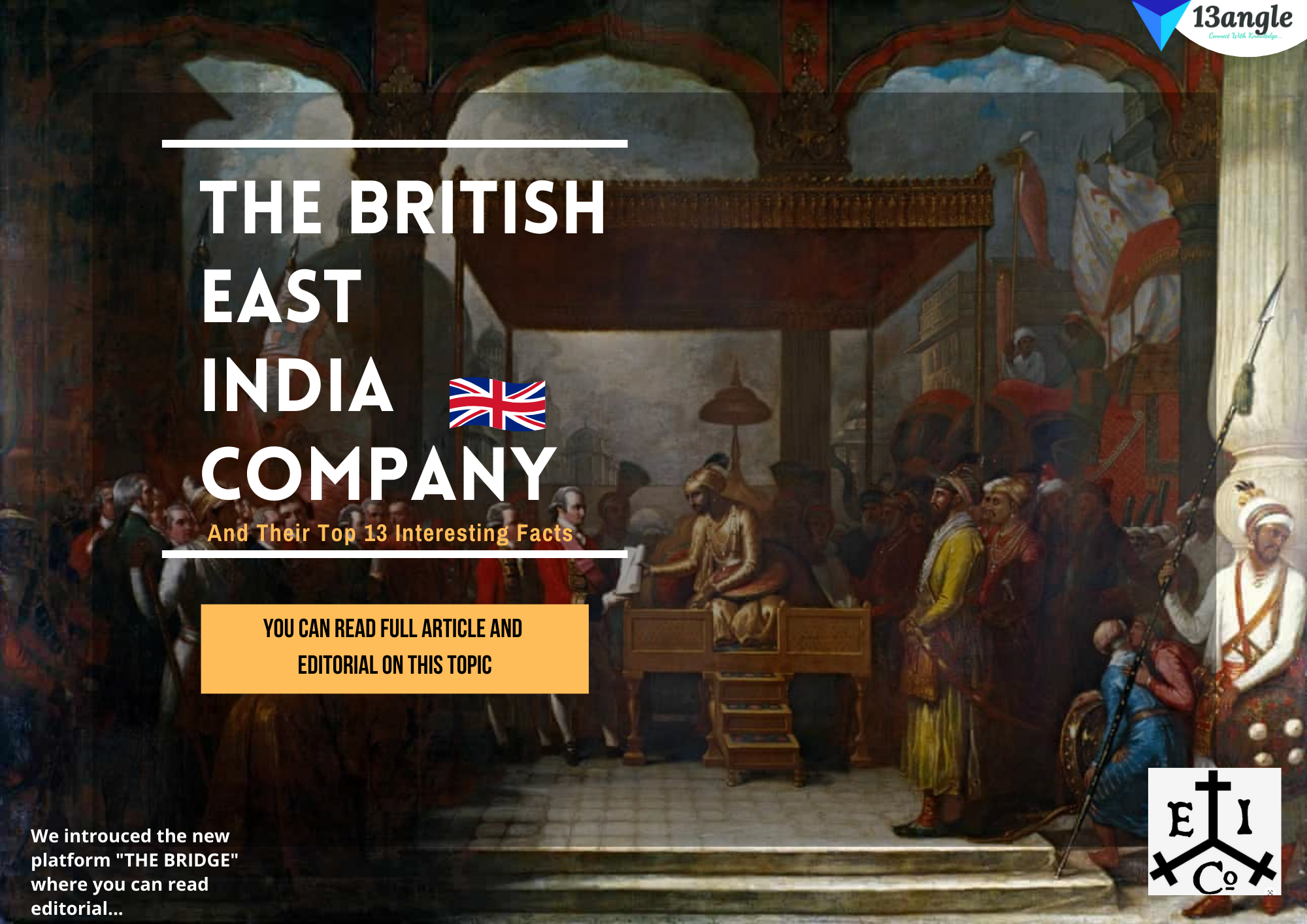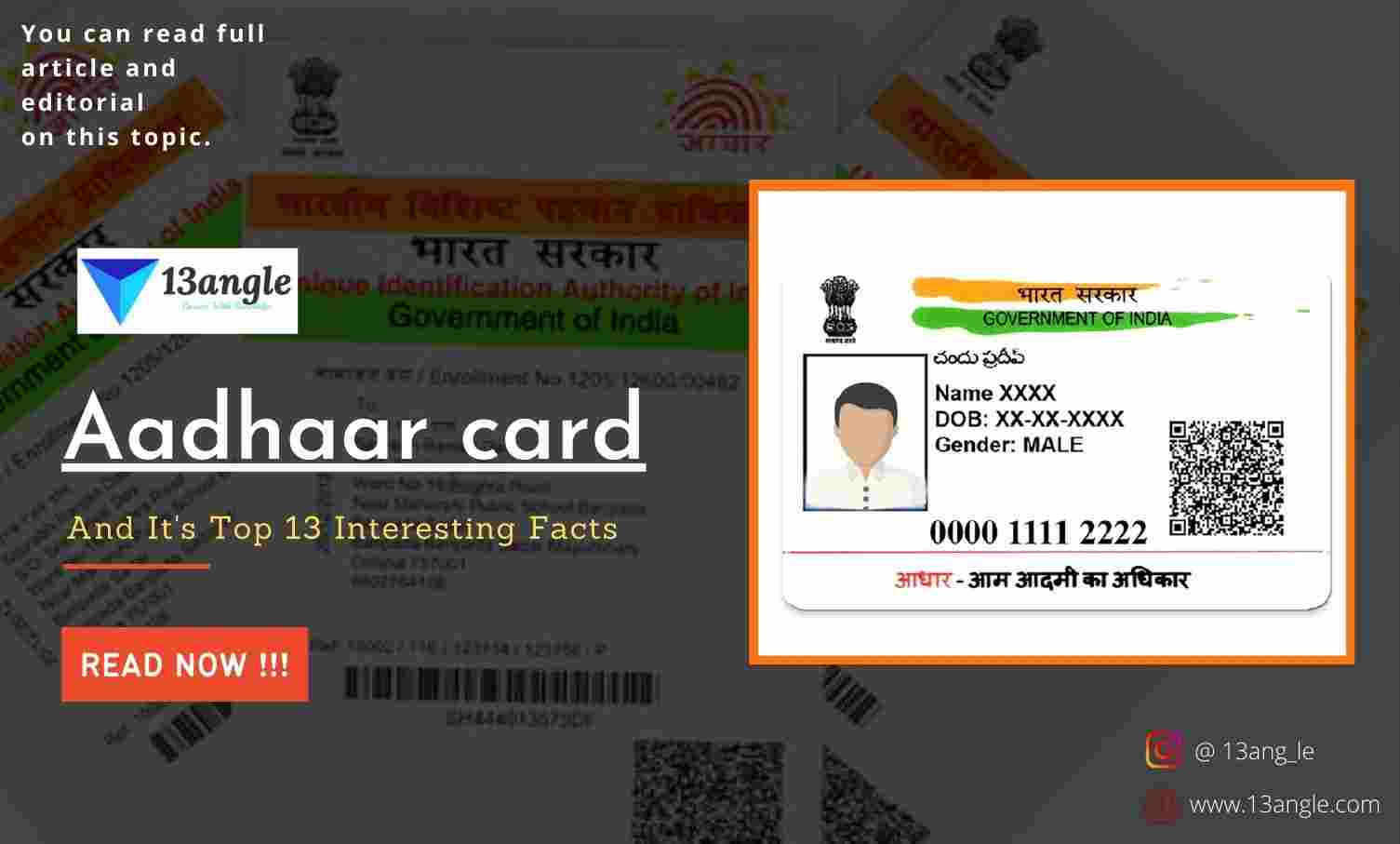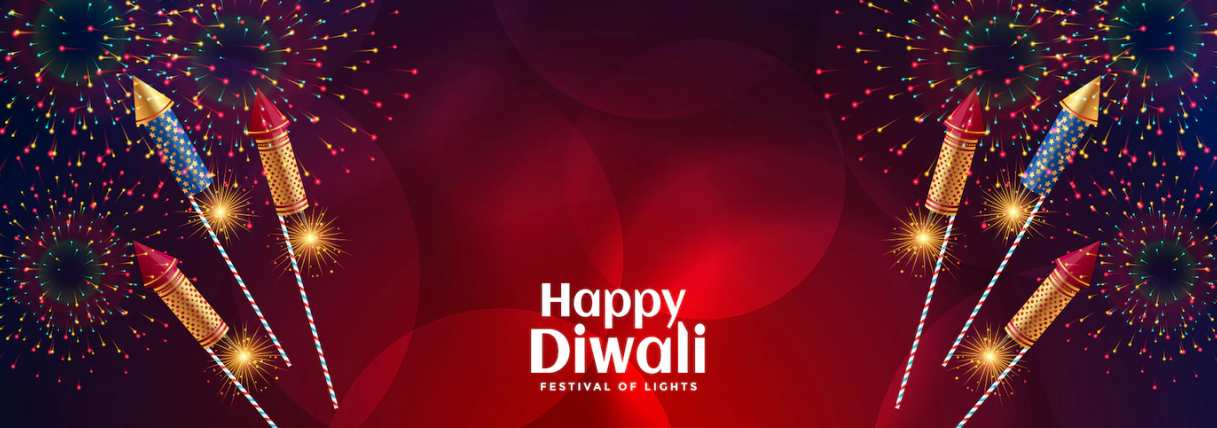
History Of Deepawali
1. Return Of Lord Rama:-
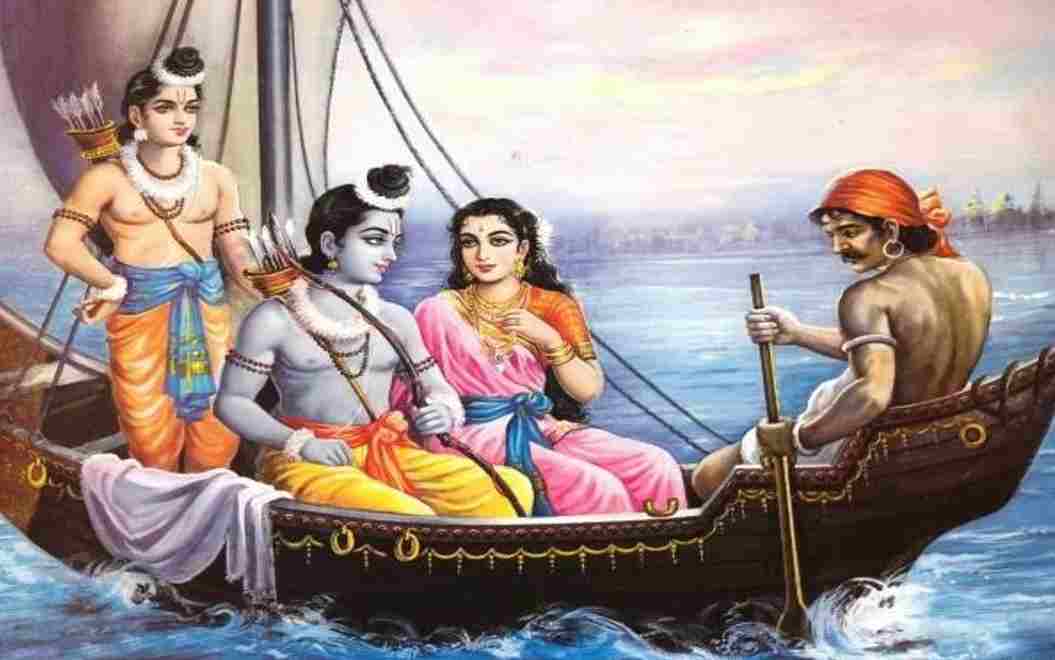
Lord Rama is the son of King Dasharatha and his wife Kaushalya. King Dasharatha had three wives – Kaushalya (eldest queen), Kaikeyi (second queen) and Sumitra (youngest queen). Kaushalya is also the mother of Shanta (eldest daughter). Kaikeyi gave birth to Bharat. Sumitra had twins named Lakshamana and Shatrughna. Kaikeyi had two boons given by King Dasharatha which she promised to use in future. Kaikeyi got influenced by her maid Manthara and asked King Dasharatha to grant her boons as Bharat would be the King instead of Rama and to send Rama for 14 years of exile in the forest. Lord Rama happily accepted it. Along with Lord Rama, Sita and Lakshamana also went to the forest for 14 years. They faced a lot of struggles in the forest. One day, Ravana (King of Lanka) in the sage get up and asked Sita for food. That time Rama went in search of the golden deer Sita saw. He asked Lakshamana to take care of Sita. But Ravana in the voice of Rama asked for help. Lakshamana drew a circle around the hut called Lakshamana – Rekha and asked Sita to not cross it and went for rescuing Rama. Then Ravana came in sage look and insisted her to give food by crossing the line. As soon as she crossed it, Ravana came in his original form, kidnapped Sita and took her to Lanka. Rama with help of Hanuman (Son of Vayu), Anjana, Sugriva, army of monkeys (vanar-sena), and Vibhishan (brother of Ravana) defeated Ravana. Rama killed Ravana on the tenth day of Sharad Navratri which is celebrated as Vijayadasami or Dassera in India. Bharat had taken a vow if Rama did not come as soon as his exile was complete he would give up his life. To save Bharat, Rama and his army travelled from Lanka to Ayodhya in 20 days. The day Rama returned to Ayodhya from his 14 years of exile is celebrated as Diwali.
2. Victory Of Lord Krishna:-

Lord Vishnu in Varaha avatar and Goddess Bhoodevi had a son Naraka. With Asura Banasura, Narakasura became evil. Lord Brahma had granted a boon to Narakasura that only his mother would be able to kill him and no one else. Narakasura was very happy that he was immortal for no mother can kill her children. So he tried to gain the control everywhere an earth. He targeted Swargalok and conquered it too, ruling on heaven and earth. He kidnapped 16,000 women and did many injustice. He even stole earrings of Aditi (mother of Gods). Because of all these injustices, Aditi reached to Satyabhama (Krishna’s wife) for help. Satyabhama told Krishna and asked to wage a war against Narakasura for his ill treatment. Krishna fought furiously with Narakasura. In the fight, Narakasura attacked Krishna and hit him in chest. Then Satyabhama (avatar of Bhudevi) fired an arrow at Narakasura and killed him thus prooving the boon only his mother could kill him and no one else. Naraka Chaturdashi or Chhoti Diwali is celebrated as the victory over Narakasura.
3. Mahalaxmi Puja On Diwali:-

People worship Goddess Laxmi (wife of Vishnu) for wealth, good fortune and prosperity. It is believed that Lord Vishnu is in deep sleep when Diwali falls. Lord Vishnu sleeps from Shayani Ekadashi (11th lunar day of Ashadh) to Prabodhini Ekadashi (11th lunar day of Kartik). So, people worship Goddess Laxmi after sunset for their good health, wealth and luxury in life.
4. Worshipping Saraswati On Diwali:-

Goddess Saraswati is seen holding sacred books in one hand, Veena in 2nd hand, a rosary in the third hand, and a water pot in the fourth hand. Goddess Saraswati has four hands. She is the epitome of knowledge and wisdom. Many people worship notebooks, pens, and Goddess Saraswati for wisdom and knowledge.
5. Kali Puja On Diwali:-
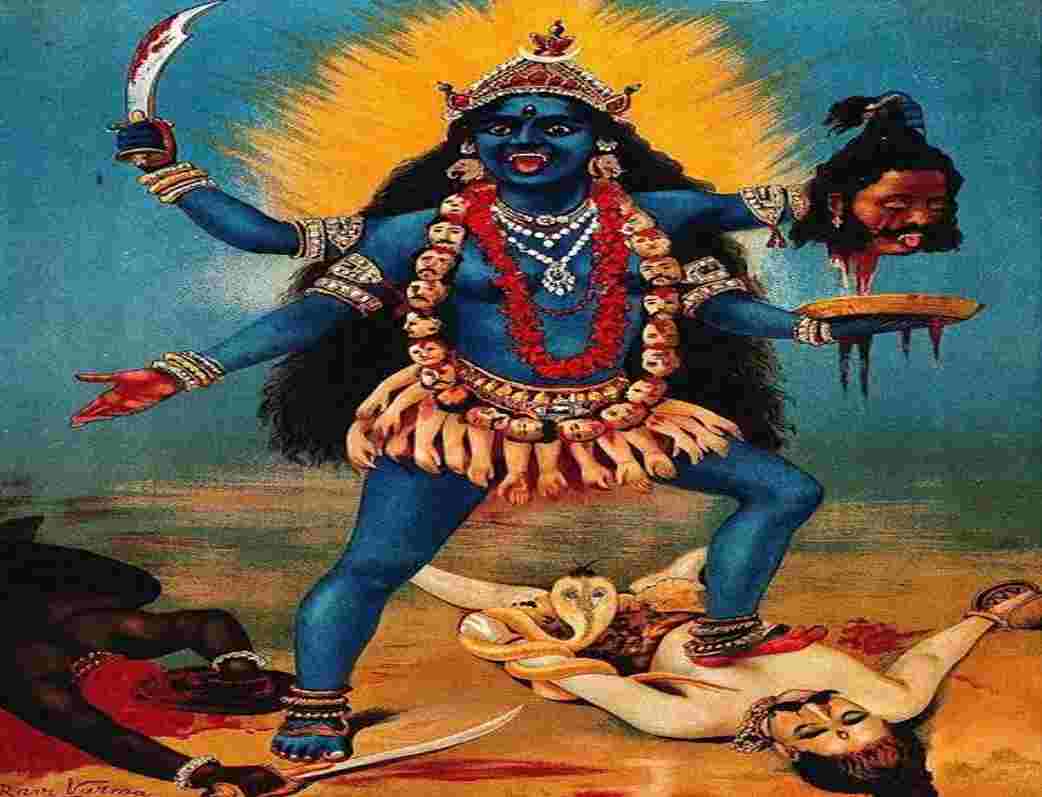
Shumbh and Nishumbh were two asuras. They wanted to rule over heaven and earth and disturbed the peace of God. The Gods took shelter in the Himalayas, the home of Lord Shiva. Gods asked for help from Goddess Durga. From Durga’s forehead, Kal Bhoi Nashini was born as Kali She saved earth and heaven from Shumbh’s and Nishambh’s cruelty. Kali started furiously killing all demons in anger. Whoever came in her way she killed the demon and wore its head as a garland around her neck. As she lost her anger, Shiva came to stop her, and she unconsciously stepped on his chest and bit her tongue. Therefore, we see Kali with the demon’s head in hand and stepping on Shiva with their tongue soaked in blood.
6. Balipratipada – Bali And Vamana Story:-
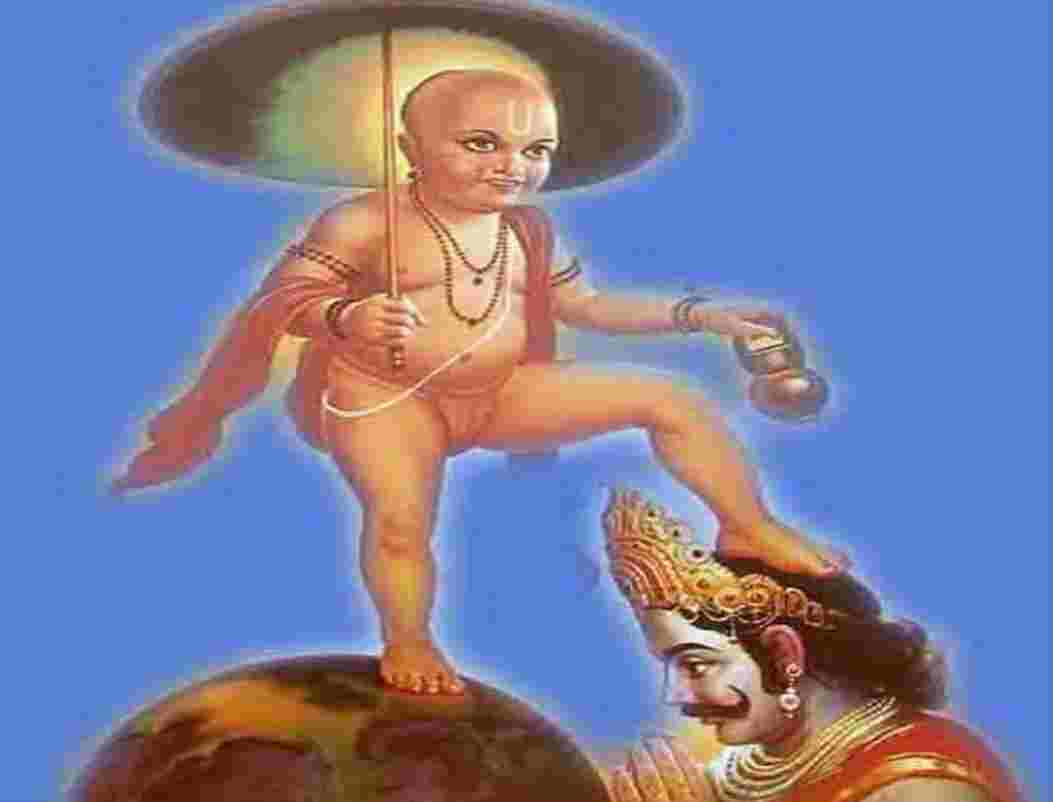
Bali had done many yagnas. Gods were also afraid that he might get boon and Swargalok. So, all Gods went to Vishnu for help. Vishnu became a dwarf brahmin (Vamana). He asked Bali if he wants a place to meditate. He wants only 3 steps of land. Bali laughed and said that he is the king of the world and soon going to conquer heaven too and this dwarf brahmin wants only 3 steps of land. He agreed. In the first step, Vamana covered the earth. In the second step, he covered heaven. When Lord Vishnu asked, “Where should I place my third step?” Now Bali realized he is none other than Lord Vishnu and offered his head for his third step.
7. Harvest Festival:-
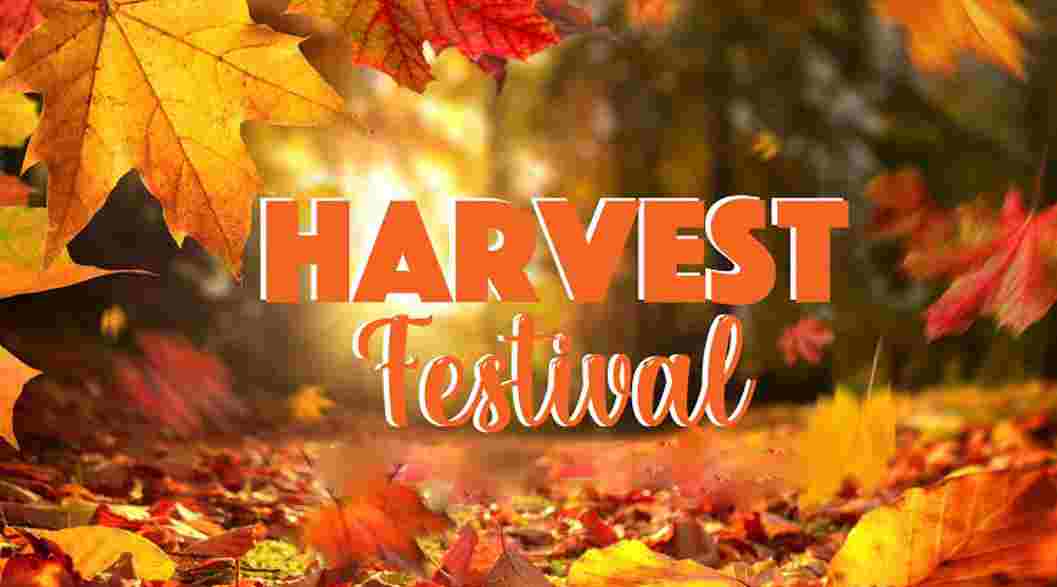
As Diwali comes in the month of October – November, this is the time when farmers start harvesting their crops. Farmers celebrate harvest festivals since ancient times in India. They also light diyas and lanterns with which insects are killed.
Religious Significance
1. Hinduism:-
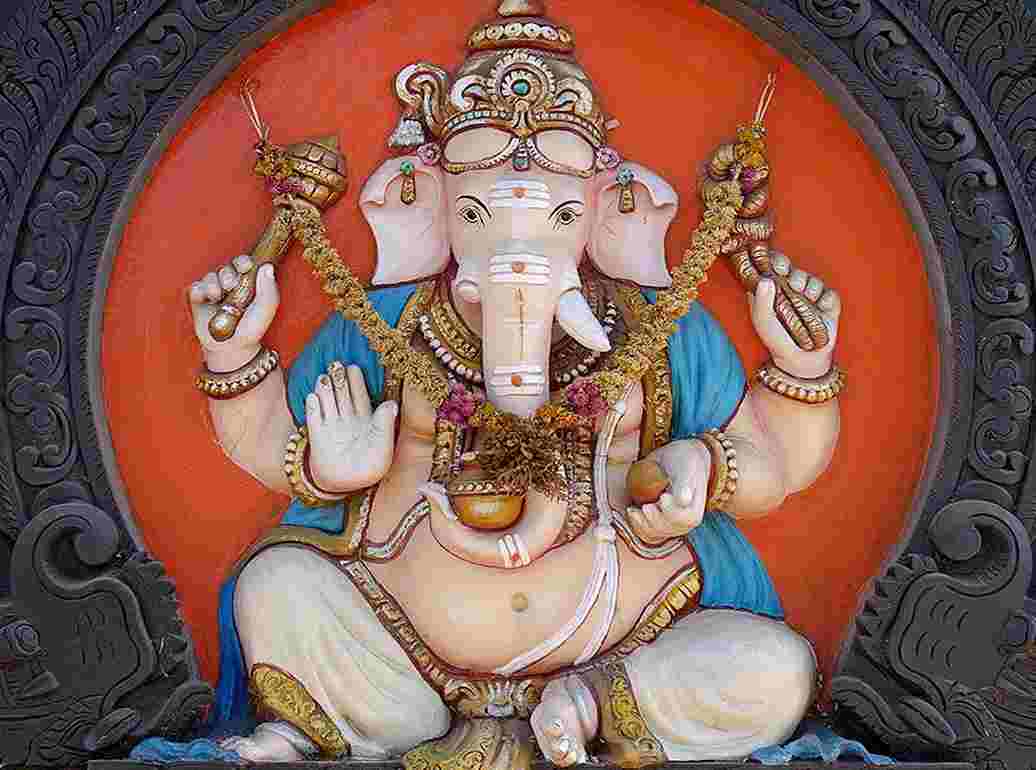
In Hindu mythology, there are different stories about celebrating Diwali. In North India, people celebrate the return of Lord Rama from 14 years of exile. Ravana kidnapped Sita and kept her in Lanka in captivity. In South India, people celebrate the victory of Lord Krishna over Narakasura. Narakasura kidnapped 16,000 women and did many ill treatments for them. In Kerala, and Andhra Pradesh people celebrate Vamana (Vishnu Avatar) and Bali stories. They celebrate it as balipratiprada.
2. Jainism:-
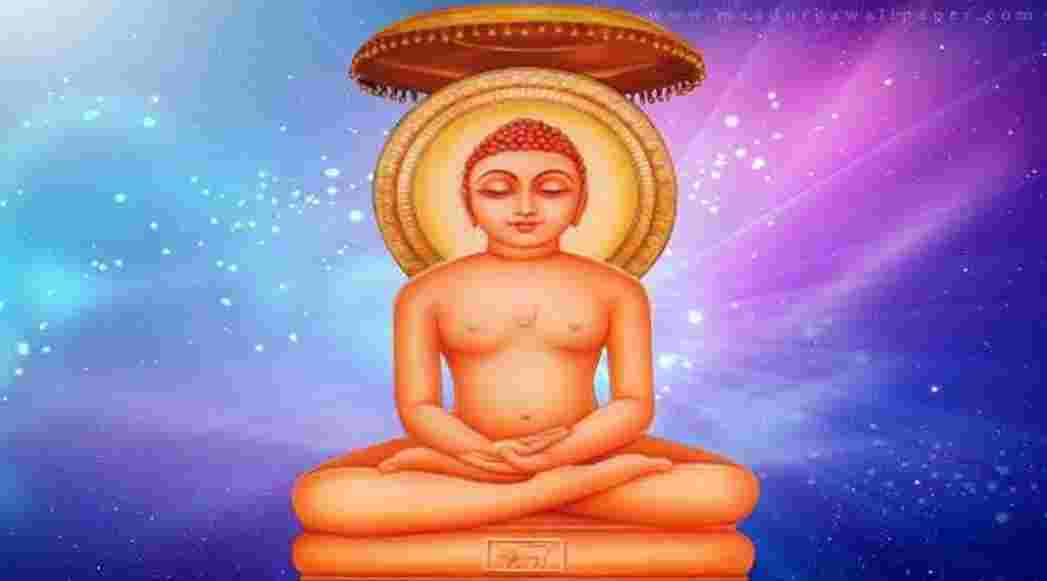
Mahavir the 24th Tirthankar attained Moksha (Liberation) on Pawapuri in the first century. It was the day of Chaturdashi of Kartika month. Mahavir attained nirvana on the morning of the new moon day. The people following Jainism thus celebrate Diwali as the day Mahavir took nirvana. People on this day, offer prayer to Lord Mahavir and offer Nirvana Ladoo. Their new year starts with Pratiprada after Diwali.
3. Buddhism:-
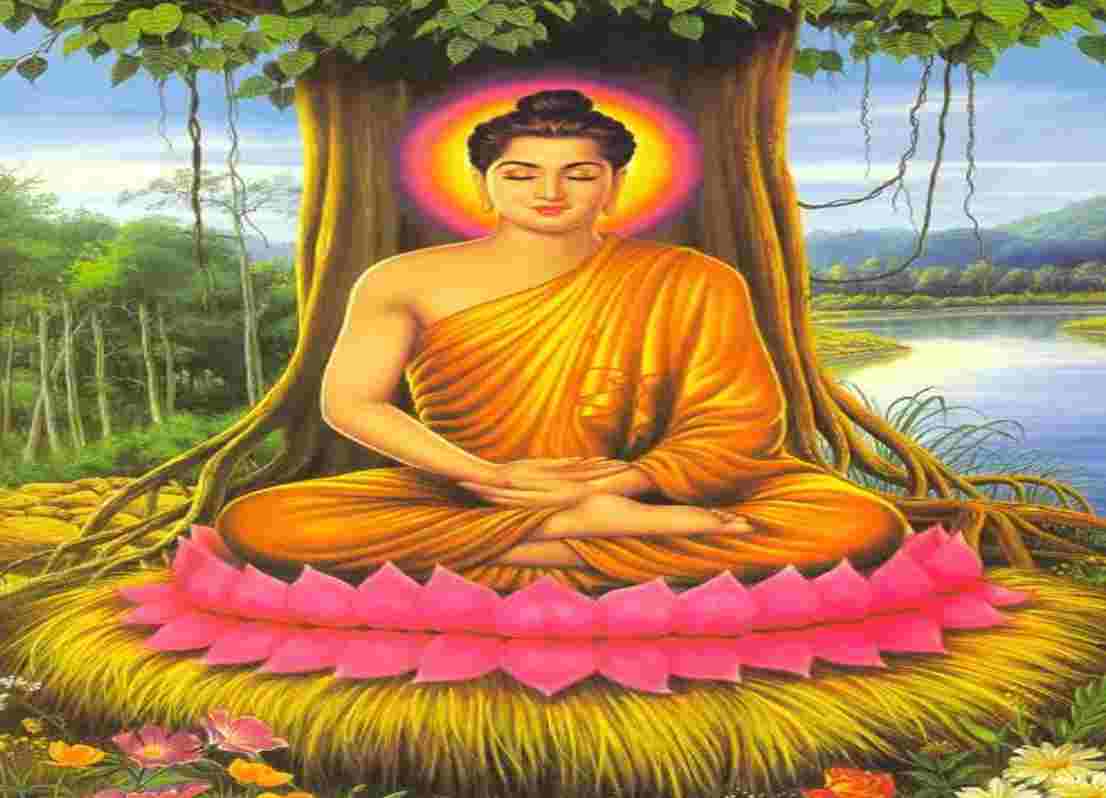
Buddhist religion emerged in the late 6th century B. C. They celebrate it as the day of Emperor Ashoka. On this day monasteries and temples are decorated, and Lord Buddha is worshipped. As the people follow Ahimsa, they generally do not burst crackers.
4. Sikhism:-
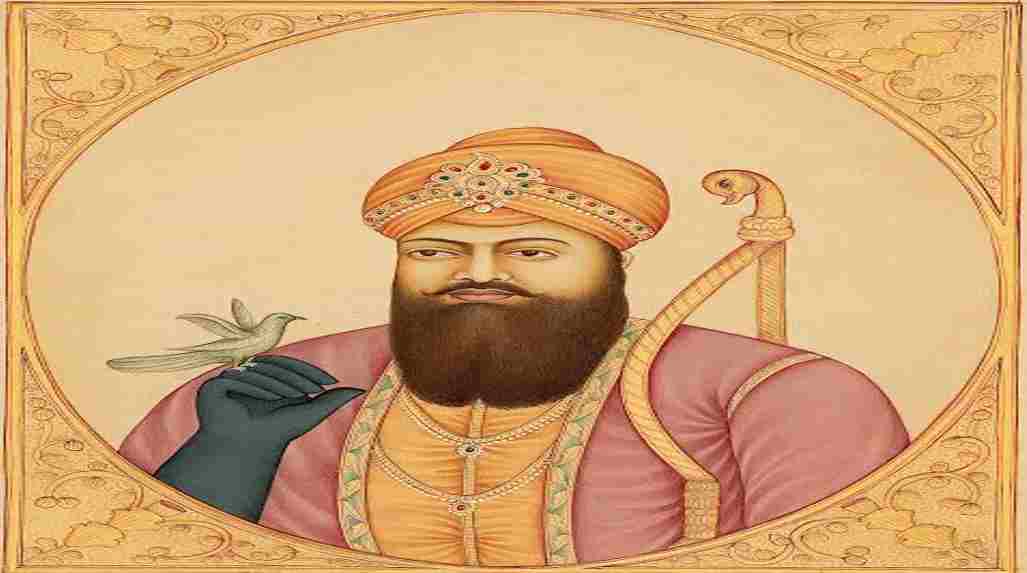
Sikhism arose in the 15th century in India. On the day of Diwali, the sixth Guru – Hargobind was released from prison. He made sure that 52 princesses who were imprisoned with him were also released. He was put in jail for 12 years by Mughal Emperor Jahangir. The Sikhs celebrate Diwali as his return by lighting up the Golden temple with lamps and diyas. They also perform Nagar Keertan (street procession) and an Akhand paath (a continuous reading of Guru Granth Sahib). Sikhs also honor the construction of the Golden Temple on Diwali and the martyrdom of Bhai Mani Singh in 1738.
Deepawali In Vikram Samwat
Diwali is celebrated on the 15th day of Krishna Paksha on Amavasya (new moon day) in the month of Kartik.
DATE | TITHI | FESTIVAL |
10 Nov 2023 (Friday) | Trayodashi | Dhanteras |
11 Nov 2023 (Saturday) | Chaturdashi | Naraka Chaturdashi / Chhoti Diwali |
12 Nov 2023 (Sunday) | Amavasya | Diwali |
14 Nov 2023 (Tuesday) | Pratipada | Govardhan Puja |
15 Nov 2023 (Wednesday) | Dwitiya | Bhai Dooj |
1. Dhanteras:-
This is the first day of Diwali. On this day people buy gold or silver. They also buy a vehicle on this day and do puja of the vehicle. They wear new clothes and go to temples. They worship Goddess Laxmi (God of wealth), on this day for good wealth, luxury and prosperity in their life. Also, on this day Lord Dhanvantri is worshipped. During Samudra Manthan, Lord Dhanvantri emerged holding a Kalasha filled with Amrit (ayurvedic mixture stating immortality) in one hand and in another hand sacred book of Ayurveda. People also buy metal or kitchenware on this day. People light their homes with lanterns and Diya. They also place Diya at the entrance of their house and near Tulsi plant. This is also to worship Lord Yama (God of death) to turn away any bad is going to happen during Diwali. People also make Rangoli at their doorstep. In South India, Marundha is made by Brahmin women. It is eaten in the early morning on Naraka Chaturdasi. The Marundha making is thus a legacy between females of the house. It is believed if it is eaten it eliminates the imbalance of tridoshas in the body.
2. Naraka Chaturdasi:-
It is the second day of Diwali. It is also called as Kali Chaudas in Rajasthan and Gujarat. In West Bengal it is observed as Bhoot Chaturdashi. In some parts it is also called as Roop Chaudas. On this day Krishna and Satyabhama Killed Narakasura. On this day people wake up early and take bath (Abhyankar Snan). It is done in presence of moonlight and before sunrise. People offer prasad of jaggery, sesame seed, poha (rice flakes) with ghee to Lord Hanuman. People also worship their Kul Devi. In Western India, people eat rice from freshly harvested farm. It marks the beginning of harvest festival. In some parts, people burst crackers symbolizing Narakasura.
3. Diwali:-
Diwali is the third day of a 5-day long celebration festival. It is celebrated with lots of enthusiasm. On this day people wear new clothes. They go to temple early morning to worship God and get blessings. In different parts of India Diwali is celebrated for different reasons. People on the evening perform puja and rituals. They first worship God Ganesha for wisdom. Then worship Goddess Laxmi for wealth and good fortune of them and family. They then worship Goddess Saraswati for knowledge and good mind. After worshipping God people visit friends and relatives houses and greet ‘Shubh Diwali’ to them. Children along with families burst crackers and eat delicacies of different varieties. They light diyas at doorstep and near Tulsi plant.
4. Govardhan Puja:-
It is the fourth day of Diwali. Govardhan puja is also called as Annakut. In Braj, Krishna saw people used to worship Lord Indra and celebrate autumn season. Krishna disapproved of this for he didn’t want them to worship only one God Shri Krishna. People used to respect krishna though he was small. Seeing this lord Indra god angry and started heavy rainfall and thunderstorms on Gokul. Krishna lifted Govardhan mountain on his little finger to provide shelter to people of Gokul against Indra’s heavy rains and thunderstorms. After 7-8 days Indra accepted defeat. People worship God Krishna on this day. They prepare by cow dung Lord Krishna and Govardhan in horizontal position. It is decorated by diyas, broom sticks, etc.
5. Bhai Dooj:-
It is the fifth day of Diwali. It is also called as Bhau Bheej in Maharashtra, Goa, Gujarat, Karnataka. In Odia, it is called as Bhai Jiuntia. Bhai Phonta is called in West Bengal, Assam, Tripura, Bangladesh. Bhai Teeka is called in Nepal. In Andhra Pradesh and Telangana, it is called as Bhatri Ditya. It is also called as Yama dwitiya for on this day as Yama (God of death) and Yamuna (the river) met. Before Krishna went to kill Narakasura, Subhadra (Krishna’s sister) visited him. She applied tilak on his forehead. And so, on this day sisters’ put tilak on their brothers’ forehead and put a red thread around their wrist for their brother’s longevity.
Diwali Celebration By People
1. Decorations:-
People start cleaning their homes from few days to a month ago for Diwali. They clean the whole house. People buy new materials for homes. They decorate their house also with light and Diyas. People put new torans on their house doors on Diwali.
2. Savoury:-
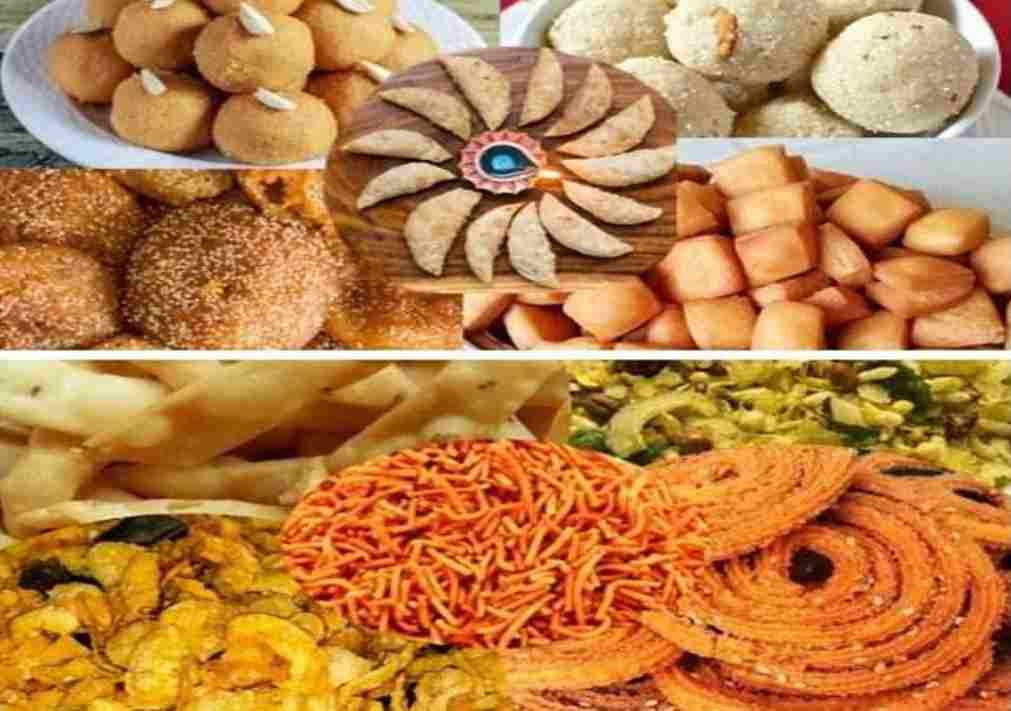
Different snacks and sweets are prepared all over India during Diwali. Chivda, chakli (Murukku in South), Shankarpali Koranji, Bakarwadi, Mathri, Nankhathai, Gujiya, Laddoo, etc.
3. Rangoli:-
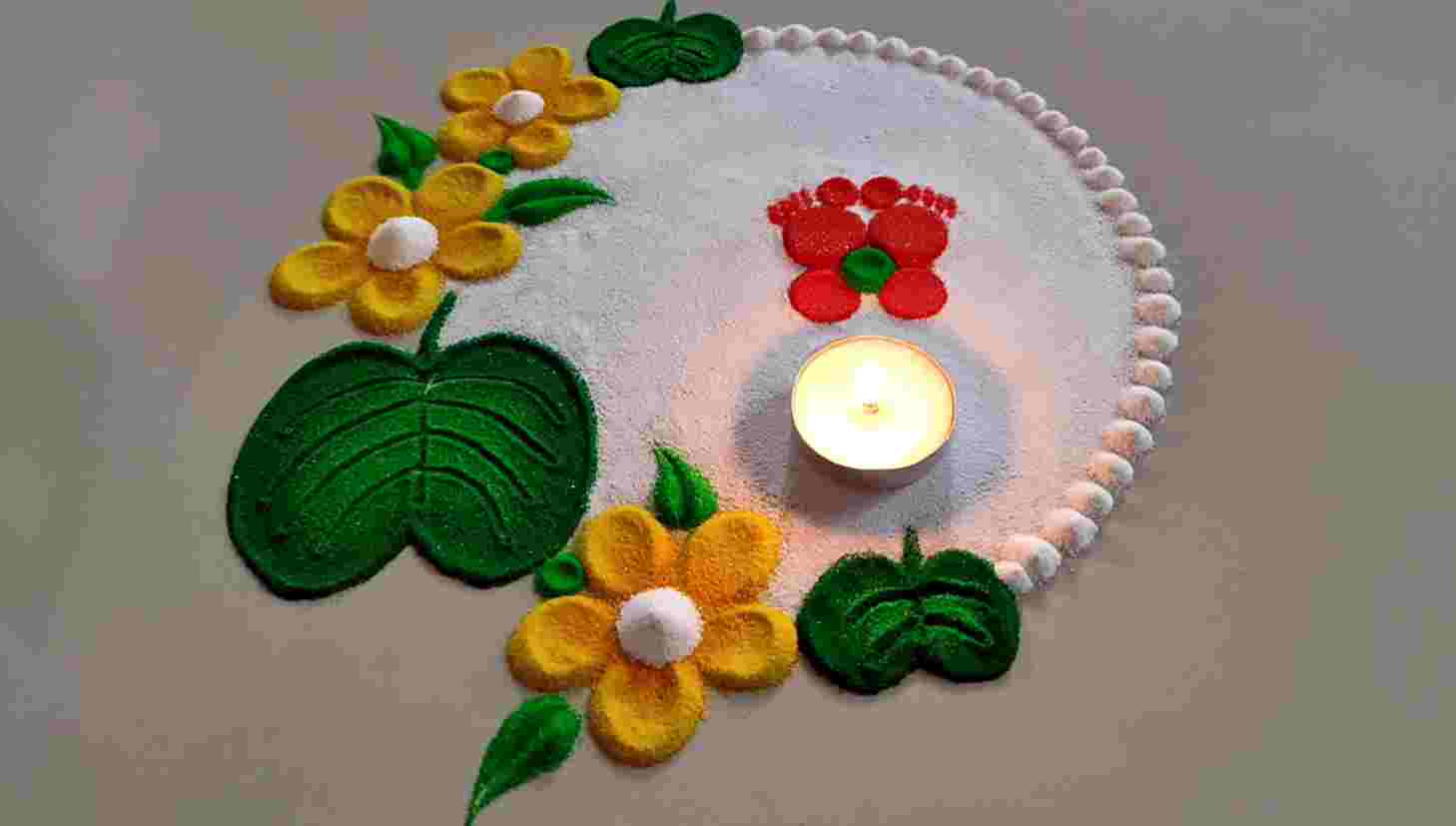
People draw Rangoli in front of their houses and in front of Kalasha. Big, small, and creative generally girls draw Rangoli all the time. They put Diyas on rangoli later. They also make Rangoli with petals of flowers and colored rice. They make the entrance of their house attractive so that God enter their house.
4. Firecrackers:-
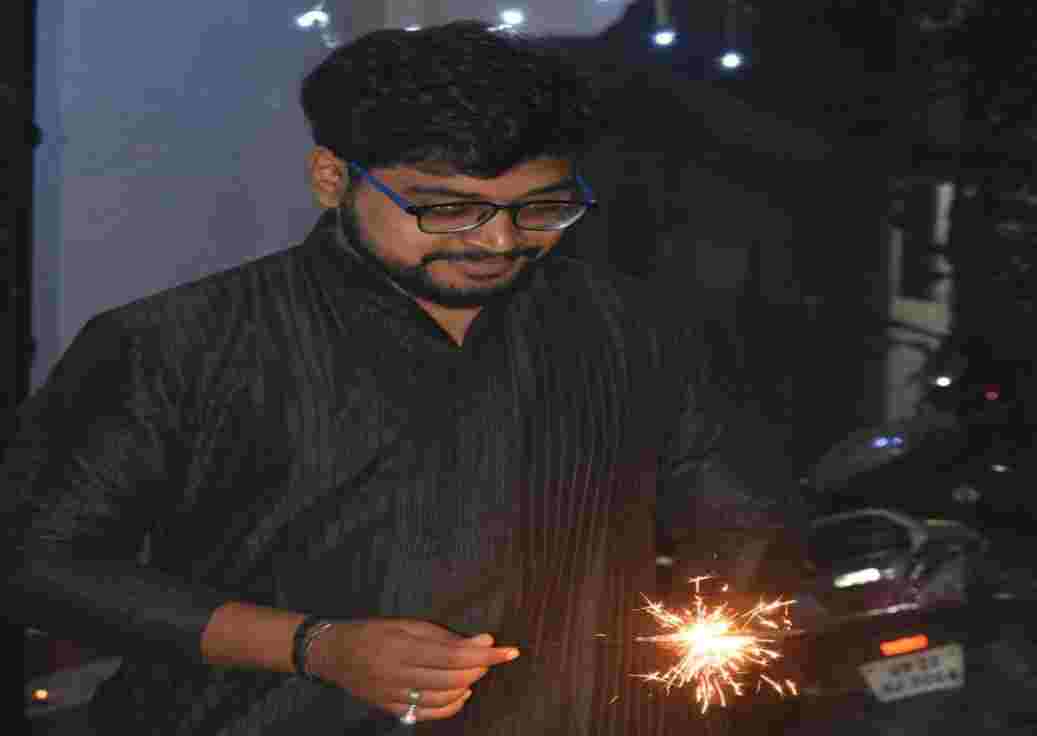
People of all age groups burst crackers on Diwali. Especially children like to firecrackers on Diwali. The whole sky can be seen lightened with fireworks. People burst fireworks worth thousands and lacs of rupees. They burst crackers after doing rituals and puja of God.
5. Puja:-
On Diwali, people do puja of Ganeshji, Goddess Laxmi, and Goddess Saraswati. People pray for good wealth and luxury to Goddess Laxmi. Also, they pray for wisdom and knowledge to Goddess Saraswati. Ganeshji is always worshipped first for he got the boon from Lord Shiva.
6. Greetings:-
People go to their friends and family’s places and greet ‘ Shubh Diwali’ to each other. They exchange sweets and gifts. Elders give blessings to kids and children. People also play games and spent time. They eat delicacies and have dinner as a family together. They also fly sky lanterns together. In today’s world, everything is incomplete without photographs. People take photographs with their friends and families too for their life-long memory.
Unnoticed Diwali
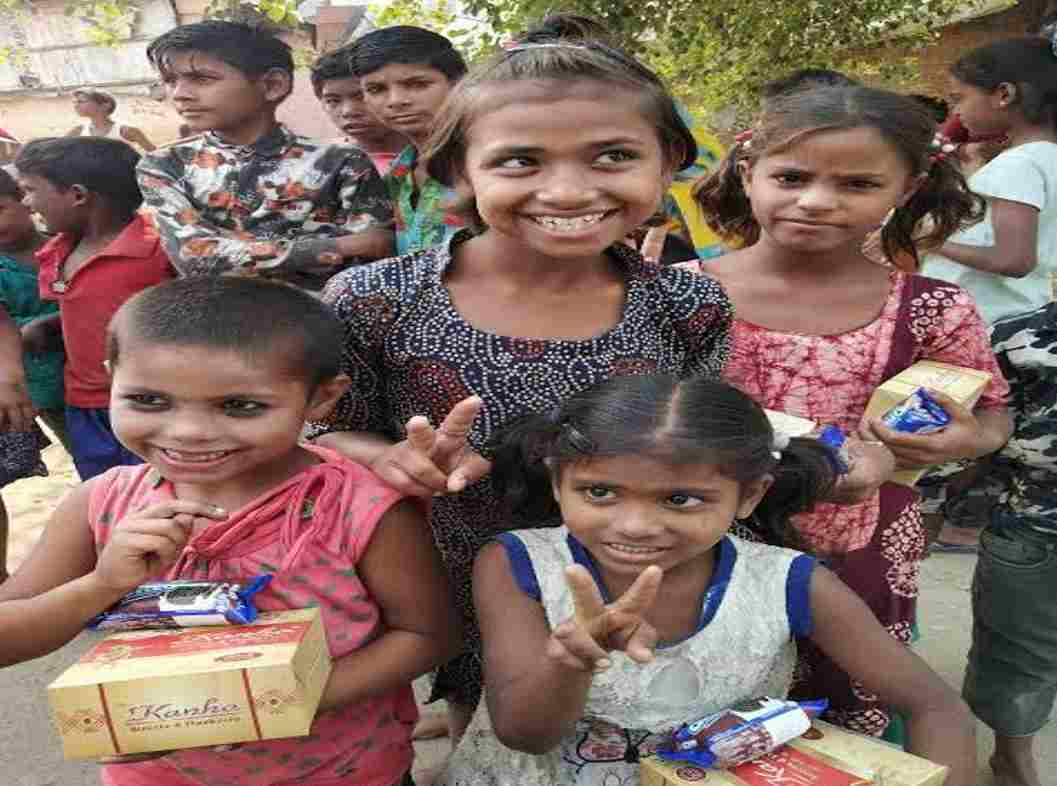
We live in a country with over 2 crore orphans. In India, there are 728 old-age homes. People should volunteer themselves to plan their Diwali with such people. If one family puts a smile on the faces of such children, God will visit their home. People can donate clothes to them, can burst crackers together, can go shopping with them, can buy food for them, etc. In different ways people can celebrate Diwali with such people. To see a change, one must be a change.
Impact Of Diwali
1. Environment:-
By bursting different types of crackers pollution is created. Crackers are hazardous for our environment. People can see the effect of pollution on their skin. They can have a fever, rashes, irritation, insomnia, vomiting, asthma, bronchitis, etc.
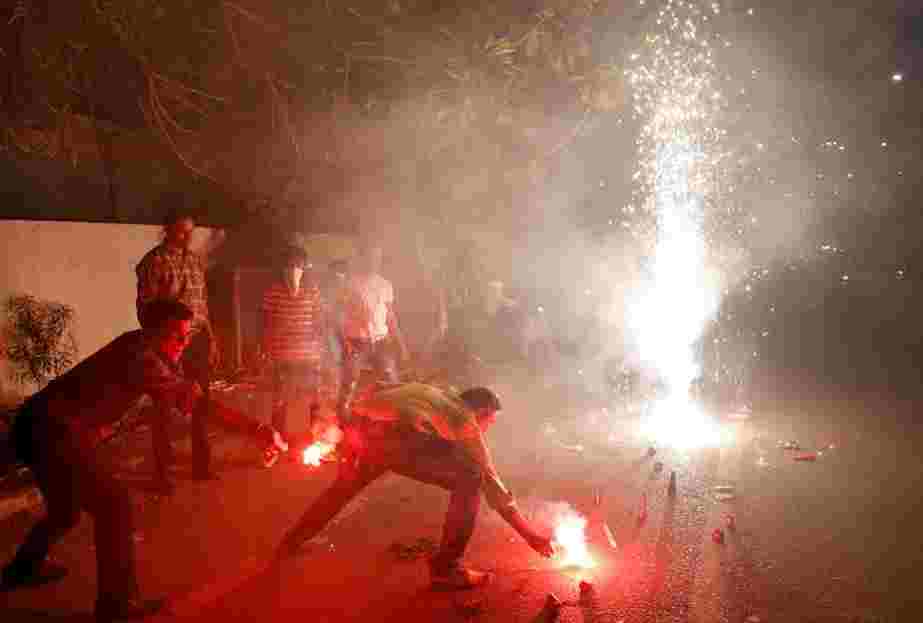
1. Air Pollution:-
Pollutants such as Barium, Cadmium Mercury, Nitrate, Nitrite, and Sodium are released from fire-crackers. The smoke causes various lung infections and diseases.
2. Land Pollution:-
The left-over pieces of crackers after burning accumulate and are non-biodegradable. With time they turn toxic. This leads to land pollution. It also polluted the soil further.
3. Noise Pollution:-
People use different types of loudspeakers which also contribute to noise pollution. On Diwali day the noise is so much that it can cause temporary deafness in people and also some hearing problems. It can also cause heart problems and hypertension. Animals also suffer because of human inhuman activity.
2. Industry:-

During Diwali time there is a hustle in every shop. People are seen buying different things. Diwali especially benefits businesses and the industrial sector. Demand and sales both are high currently. It profits the Indian Economy also. Nowadays people are seen buying from e-commerce as well. It is considered auspicious to buy stocks during Diwali time.
3. Employment:-
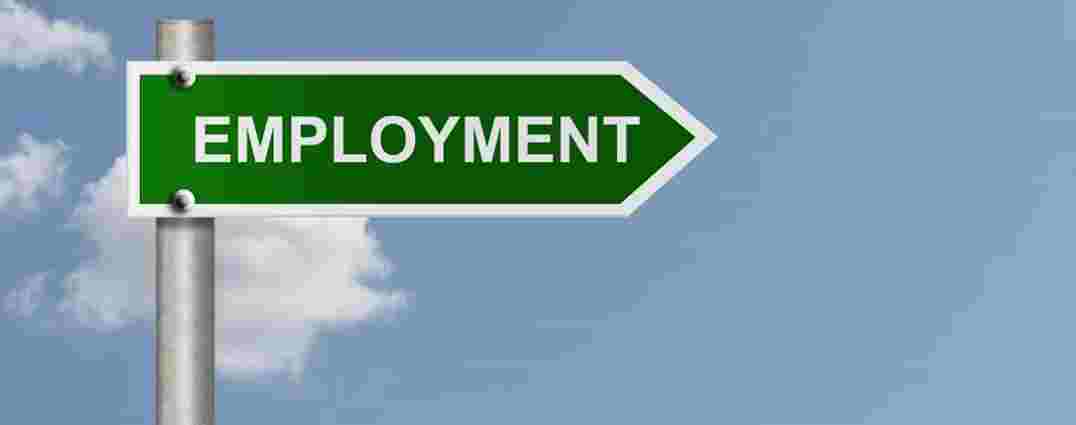
People and various artisans get opportunities during Diwali time. They get more employees and customers during Diwali time. No matter whether it is rural or urban areas employment is increased during Diwali People make Diya, lanterns, decoration things, torans, etc.
Eco – Friendly Diwali
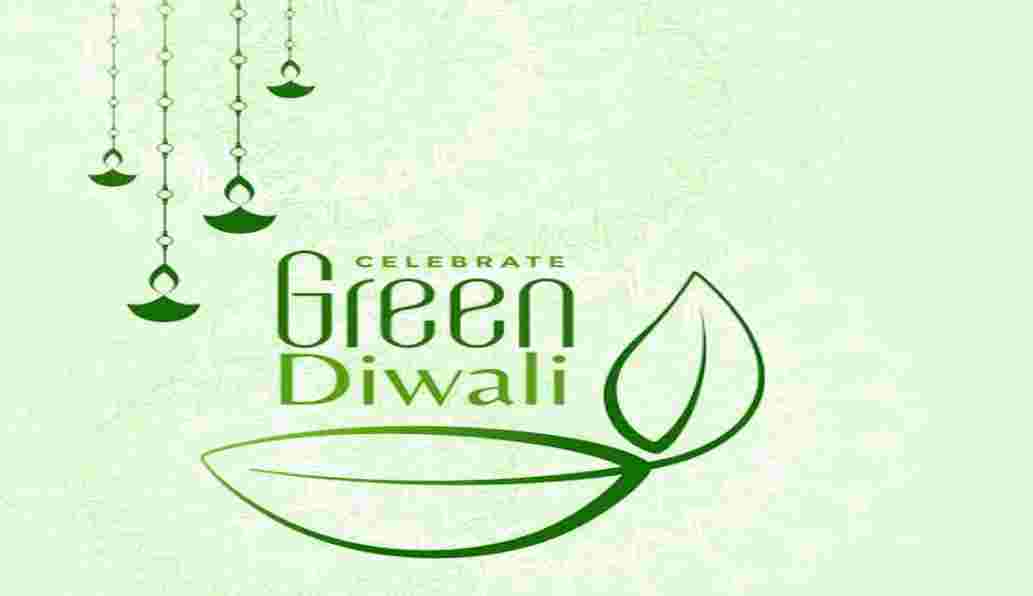
Wrapping gifts in newspapers instead of plastic sheets.
Decorating the house with oil Diya other than Diya that consumes electricity.
Making Rangoli with natural colors. Flowers and colored vice.
Buying no-crackers or at least eco-friendly crackers. The government has also taken celebrate various steps to ensure a green Diwali in India.
Lessen Distance And Strengthen Bonds
On the day of Diwali, the whole family unites. People celebrate it together with family and friends. Children have a Diwali vacation so after Diwali, they go to their uncle’s house and grandparent’s house. People who work away from home book tickets in advance before 3-4 months to be a part of their family during festival. Diwali is a festival which is celebrated with great joy and entry among people. People from foreign countries visit their family during Diwali. These people visit their family once in a year or once in many years during Diwali. Their mixed feelings can’t be expressed in any words.
Deepawali In Ayodhya


Ayodhya is the birthplace of Sri Rama. Located on the bank of River Sarayu, Ayodhya celebrates Diwali as the return of Lord Rama from 14 years of exile. It is said that the first puja and rituals are performed here in the country on Diwali. In this ritual, 81 priests are involved. The celebrations occur along Sarayu river with lakhs of diyas view. Chief Minister of Uttar Pradesh Yogi Adityanath 2017 started ‘The Deepotsav Event’ in Ayodhya. On 23 October 2022 it will be sixth Deepotsav. This year nearly 14.5 lakh diyas will be lit.
Diwali In Other countries
Diwali is celebrated across the world. In Malaysia, it is called Hari Diwali meaning Green Diwali. People celebrate their Diwali without fire-crackers. Mauritius has many Hindu. People celebrate Diwali there for almost a week. In Nepal, it is also called as Tihar. People decorate their house and pray to Goddess Lakshmi. The festival of lights in Nepal is 2nd biggest festival after Dashain. Countries like Thailand, United Kingdom, Canada, Singapore also celebrate Diwali with huge enthusiasm. The fireworks are the main tourist attraction. In Fiji, it is declared a public holiday. The festival of Diwali was not celebrated in the White House until two decades ago. In the year 2009, it first started with President Barack Obama celebrated the festival of Diwali by lighting a lamp in the White House. Former President Donald Trump celebrated Diwali and now Joe Biden also celebrates Diwali. Including India, Diwali is celebrated in 160 countries. This also includes countries like Egypt, Jordan and Syria, though they are Islamic Nations.
Conclusion
Diwali also called as deepawali, is a festival celebrated not only in India but all over the world. It’s meaning is lighting diyas in a row. People celebrate it with joy with their family. They worship God Ganesh, Goddess Laxmi, Goddess Saraswati, Lord Krishna and all other God and ask for blessing for them and their family. They even worship God of death i.e. Yama on Diwali. People have fun in Diwali vacation. They go to their brother’s place, uncle’s place, grandparent’s place. Diwali is a festival celebrated by Jains, Sikhs, Buddhists along with Hindus. People of all age burst crackers along with children and draw Rangoli in front of their house. Although Diwali is celebrated by different stories in different states but its motive is one that God will look after it’s children and to take blessings from God for prosperity and good health and wealth.
Top 13 Interesting Facts of Diwali
The Indian ministry of AYUSH observes Dhanteras as National Ayurveda Day. This was first observed on 28 October 2016. This year, it will be observed on 23 October 2022.
Diwali is celebrated by more than 800 million people around the world with different traditions.
Diwali is also known as the day on which the foundation stone of the Golden Temple was laid in the year 1577.
Diwali is also known crucial time for Financial Implications. If the harvest is good, debt gets cleared and both farmer and money-l0ender celebrate Diwali with enthusiasm. If their harvest turns bad, they pray to God for better luck and fortune.
People make Rangoli at their doorstep with Lakshmi’s Padukas (footprints of Goddess Lakshmi).
The world’s largest Rangoli measuring 22,863 square meters was created by the Singrauli district administration last year. It not only received a distinction from the Guinness Book of World Records last month but has also found its pride of place in the Golden Book of World Records and India’s Book of Records.
As a ritual of brotherhood and friendship between Hindus and Muslims, in 1905 Rabindra Nath Tagore extended the symbolism of Brother’s second.
The Guinness World Record for the largest Annakut held was on October 27, 2010 (Diwali) in BAPS (Bochasanwas; Akshar; Purushottam; Swaminarayan) Sansthan in Gujarat with over 3500 vegetarian dishes.
During Diwali India and Pakistan, soldiers Keep war aside and share sweet and exchange greetings.
Doors and Windows are kept open for Goddess Lakshmi to enter the house.
Sivakasi in South India is the biggest provider of fireworks in the whole country. It provides around 90% of India’s firecrackers.
Diwali is a National holiday in 11 countries namely Fiji, Malaysia, Guyana, Nepal, Myanmar, Singapore, Suriname, Trinidad, Mauritius, Sri Lanka, and Tobago.
Every year in Leicester, United Kingdom there is the largest Diwali celebration outside India. At least 6,000 colorful lamps will be lit. The best view can be seen from Belgrave Road.
FAQs
Diwali is celebrated for many mythology reasons. One main reason being the return of Lord Rama from 14 years of exile to Ayodhya.
On the day of Diwali people light diyas, lanterns (aakash-kandils) for welcoming of Lord Rama from his exile of 14 years.
Diwali or Deepawali is called as the festival of lights. It comes in the month of Kartik on the day of Amavasya (New moon).
People gamble on Diwali to check their luck factor in coming days. They also gamble to check their financial prosperity.
Not really. Diwali is celebrated by Jains, Sikhs and Buddhists people also. They do have their own mythological beliefs but Diwali is a PAN India festival.
Yes, there are other mythological reasons also behind celebrating Diwali. Lord Krishna killed Narakasura on the day of Diwali, story of Lord Vishnu in Vamana avatar and Bali, Kali killed Shumbh and Nishumbh on this day.
A number of precautionary measures are there for Diwali. For example, lighting fire-crackers with long candles, disposing burnt crackers in bucket of water, keeping first-aid at the nearest, not wearing loose clothes, burning fire-crackers away from vehicles and in presence of elders.
Jains celebrate Diwali as the day Mahavir the 24th took moksha (liberation) or nirvana.
